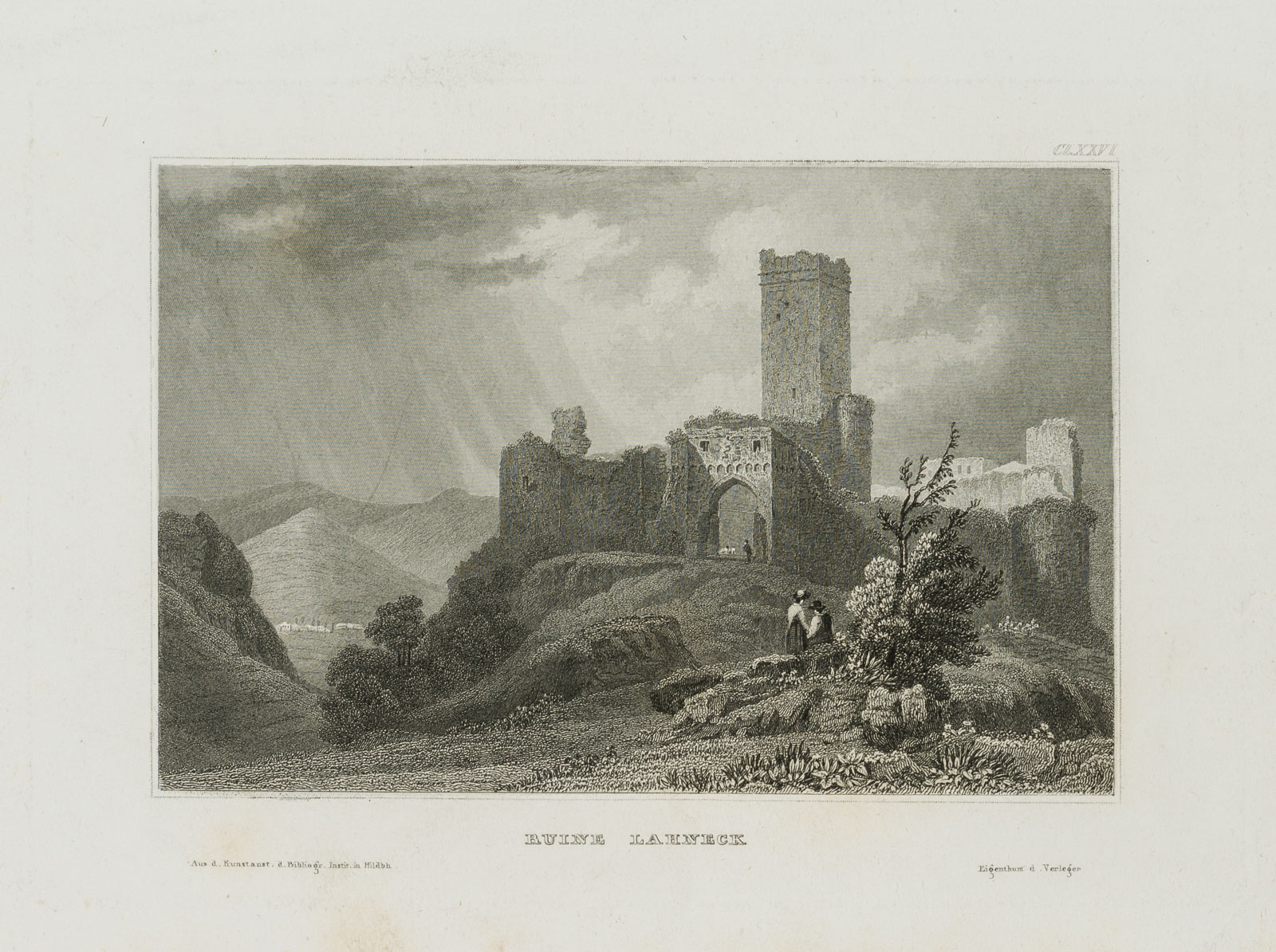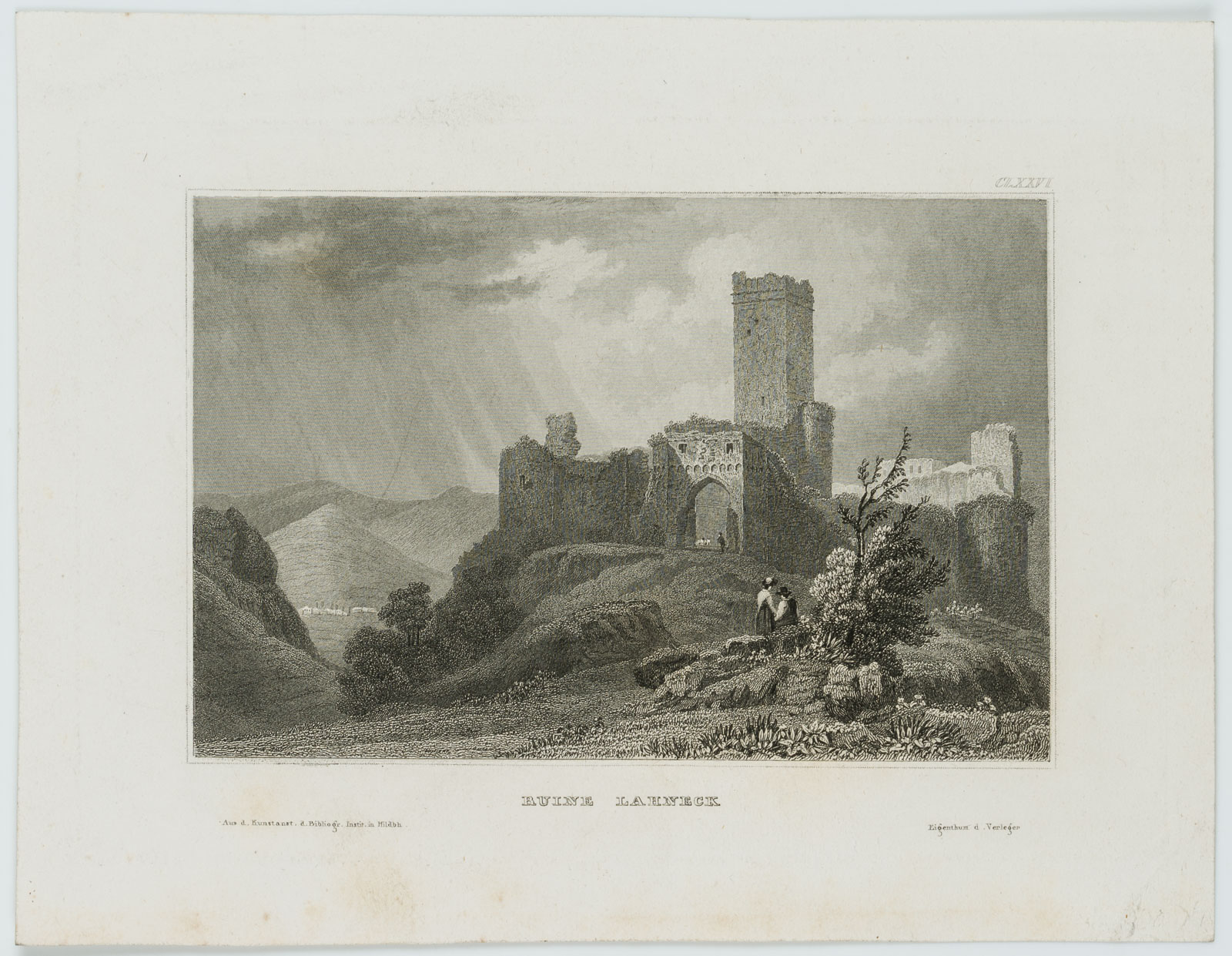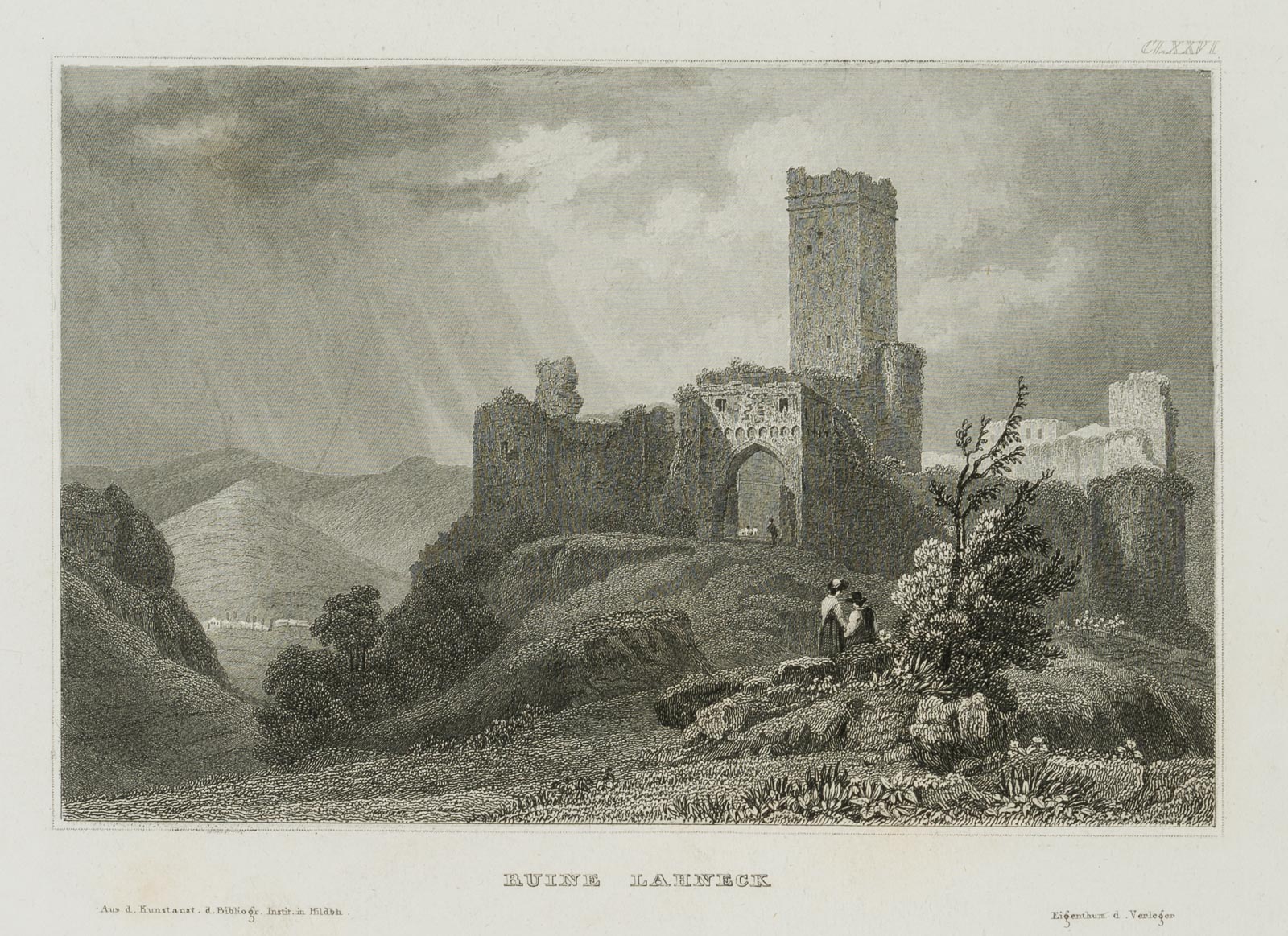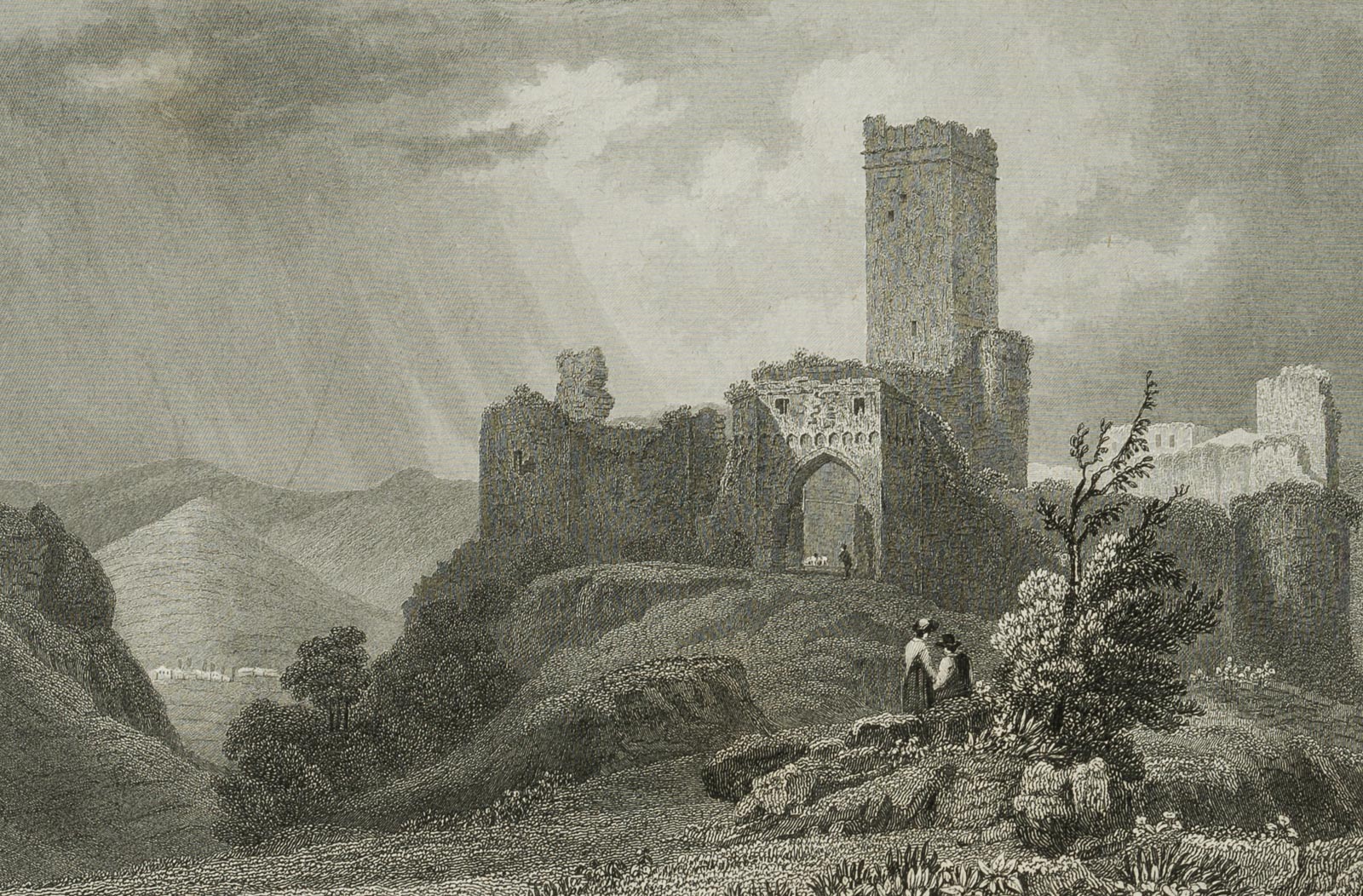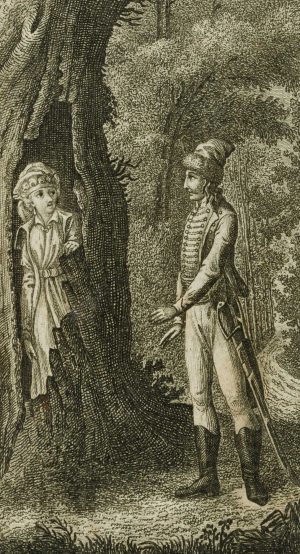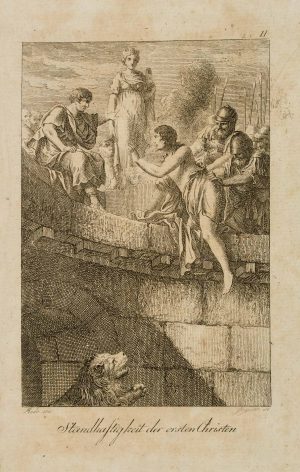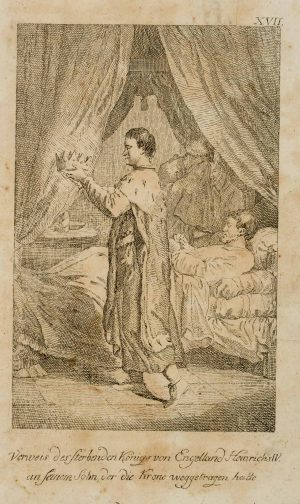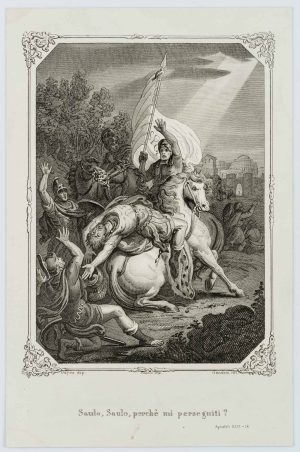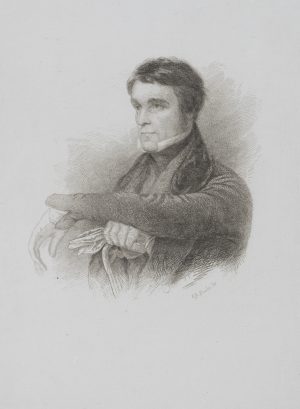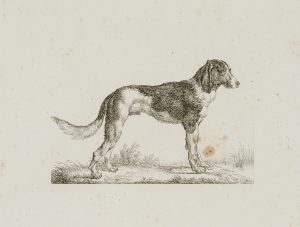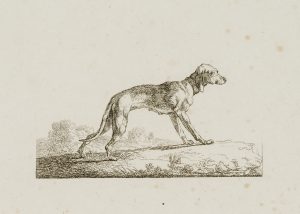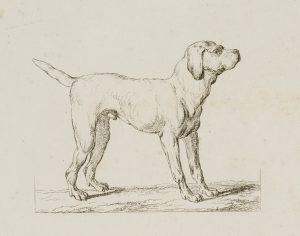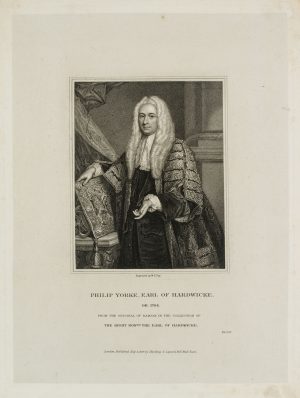Nach William Tombleson (1795 – um 1840 ), Ruine der Burg Lahneck, um 1830, Stahlstich
- Technik: Stahlstich auf Papier
- Bezeichnung: Unterhalb der Darstellung betitelt und bezeichnet: “Aus d. Kunstanst. d. Bibliogr. Instit. in Hildbh. / Eigenthum d. Verleger”.
Romantische Gebäudeansicht mit rastendem Paar im Vordergrund, im Tor ein Hirte mit Tieren. Besonders sticht der Bergfried hervor mit seinem im Burgenbau selten anzutreffenden fünfeckigen Grundriss. Die Burg Lahneck ist eine in der ersten Hälfte des 13. Jahrhunderts auf einem stel hervorspringenden hohen Felsensporn über dem linken Lahnufer an der Lahnmündung erbaute Spornburg. Sie steht in Lahnstein am Rhein und Lahn gegenüber Schloss Stolzenfels. - Datierung: um 1830
- Schlagworte: Architektur, Landschaft, Deutschland, Romantik, 1800-1849
- Größe: 16,2 cm x 20,8 cm, Darstellung: 9,7 cm x 14,9 cm
- Zustand: Sehr guter Zustand. Rechte untere Ecke mit minimaler Knickspur. Entlang der unteren Blattkante etwas altersfleckig, nicht in der Darstellung. Diese ist makellos und macht einen exzellenten Eindruck.
English Version:
After William Tombleson (1795 – around 1840 ), Ruin of Lahneck Castle, c. 1830, Steel engraving
- Technique: Steel engraving on Paper
- Inscription: Titled and inscribed below the image: “Aus d. Kunstanst. d. Bibliogr. Instit. in Hildbh. / Eigenthum d. Verleger”.
Romantic view of a building with a resting couple in the foreground, in the gate a shepherd with animals. The keep is particularly striking with its pentagonal ground plan, which is rarely found in castle construction. Lahneck Castle is a spur castle built in the first half of the 13th century on a high rocky spur over the left bank of the Lahn at the mouth of the Lahn. It stands in Lahnstein on the Rhine and Lahn opposite Stolzenfels Castle. - Date: c. 1830
- Keywords: 19th century, Romanticism, Architecture, Germany,
- Size: 16,2 cm x 20,8 cm (6,4 x 8,2 in), Depiction: 9,7 cm x 14,9 cm (3,8 x 5,9 in)
- Condition: Very good condition. Lower right corner with minimal crease. Somewhat age-spotted along the lower edge of the sheet, not in the image. This one is immaculate and makes an excellent impression.

